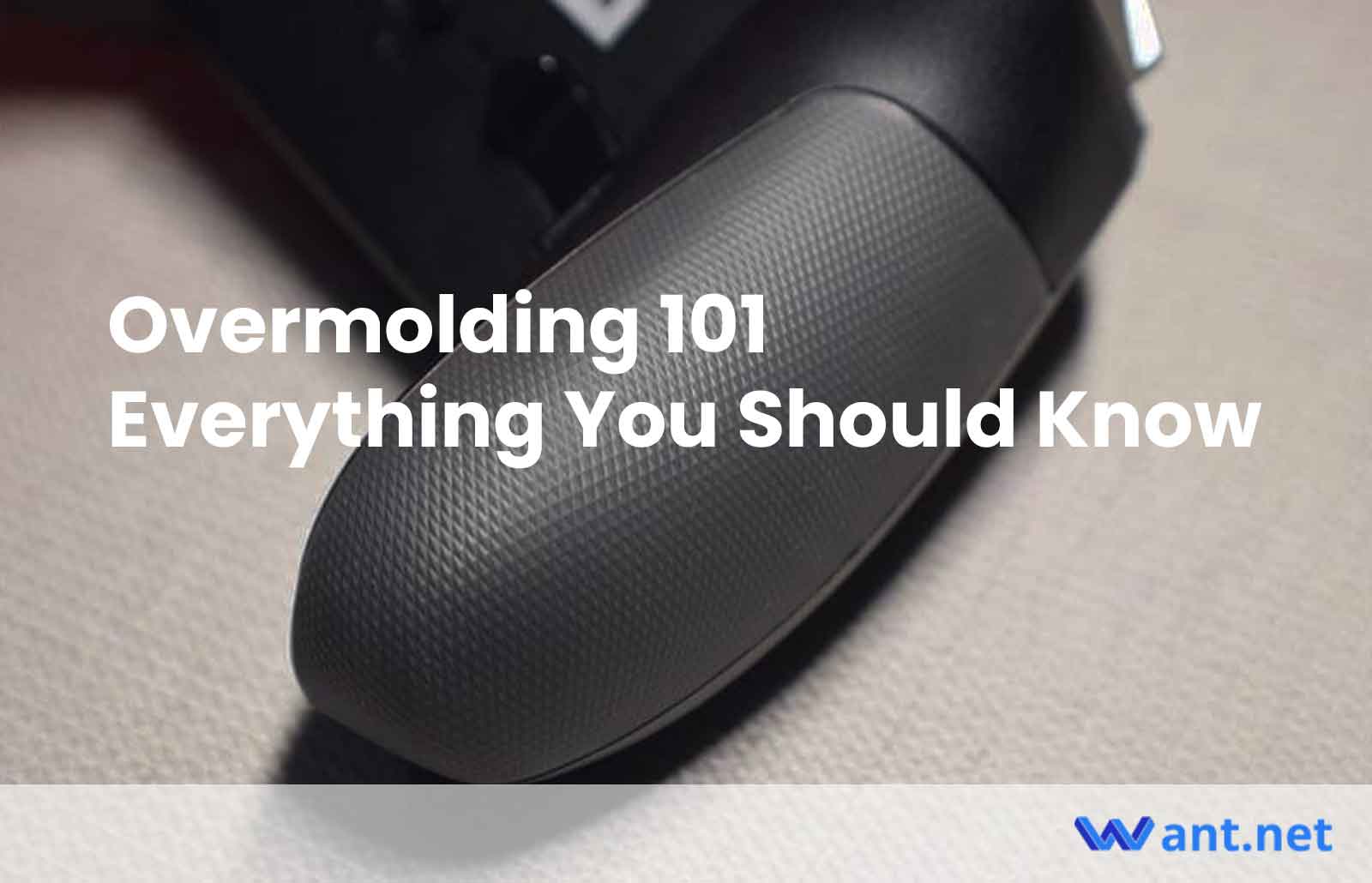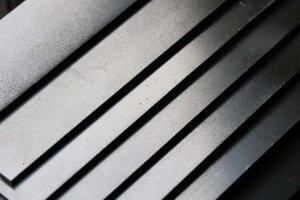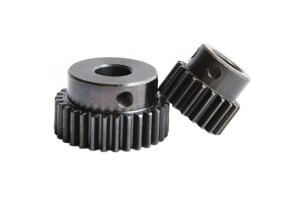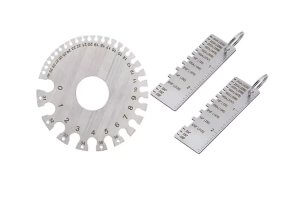Injection molding is used in many industries. It is an integral part of rapid prototyping, custom parts production, and the overlaying of plastics (plastic-overmolding) and other metals.
This article will explain the process of overmolding. We will discuss how it works, what materials are used, and the benefits.
So without any further ado, let’s get started.
What is Overmolding?
The process of overmolding injection molding involves the creation of a single material by combining two or more materials. Materials can be identical or different. Understanding the two types of materials that are used in overmolding injection molding is key to understanding it. These materials are the substrate and the overmold.
What is the difference between an overmold or substrate? The substrate is the base material, and the overmold is the material that is molded onto the substrate. Depending on the end product and manufacturer’s imagination, there may be more than one overmold.
Benefits of Overmolding Process
Overmolding is a great option for manufacturers who need to design their products with grip and style. The overmolding process is not very expensive, but it has seen great improvements over the years which have led to excellent customer satisfaction. Here are some of the benefits of overmolding.
Superior Product Performance
The product’s performance will be improved if you use overmolding with the material. This can improve product performance by reducing shock and vibration, electrical insulation and resistance to chemicals. One example is TPE which has a non-grip quality when it’s used to make certain products. TPE can also be used to create an environment barrier due to the properties described above.
Increased shelf appeal
For creating visually appealing surfaces, overmolding is a great option. This is the best method because it can be used in many colors. You can further optimize it for clear or patterned finishes.
Lower production costs
Overmolding can be a very useful process because of its many benefits, but it also has a low production cost. This makes it a great manufacturing process for quick production.
How does overmolding work?
Knowing the three types of plastic overmolding is key to understanding the entire process. These are the types of plastic overmolding.
Molding
Insert molding is the best method of molding rigid plastics or soft elastomers. Because it is more economical than the other. Insert molding involves the first separation of the hard parts into tools, before the soft material’s ejection.
Elastomers can also be used as an adhesion glue. This could be done in the form mechanical locks or chemicals. To enable chemical adhesion, the elastomer must be heated to the correct temperature. This is done by heating the segment’s hard surface.
Two-Shot Molding
Two-shot molding is a different process from insert molding. You will need to use two injection mold machines. The hard segment will be injected first. This follows the elastomeric mold in the injection molding machine.
The heated substrate is in a semi-solid state or gel. It is possible to model the mold’s design so that the lateral portion of the hard segment can be projected onto the substrate. For those who value strong mechanical bonds, the two-shot injection molding process is the best.
Co-Injection Molding
Co-injection molding, which is the most difficult and expensive of the three types overmolding methods, is also the most costly. This process is different because it involves the injection of both the substrate and elastomer in the same mold. It is also necessary that the materials be compatible.
Co-injection is the best in terms of quality overmolding. Because all materials are in the same state of molten.
What Materials Are Suitable For Overmolding
For those who are new to overmolding, it can be confusing to choose the right material as there are so many options there. Instead of knowing only the materials used in the process, it is important to understand the evaluation process. When selecting materials, it is important to consider the overmold as well as the substrate. Here are some things to consider when selecting a material.
Bonding
The materials used in overmolding injection molding should bond together. Although it is not necessary for them to bond together, the ideal situation requires that they do. Materials that do not fully bond will need to have undercuts or indents in order to connect the substrate and the overmold.
Temperature
You might need to make sure that the features of the overmold and substrate are retained, depending on which type of injection molding you use. Temperature change must not cause material deformation.
Friction Coefficient
Because plastics vary in friction, it is an important aspect of the plastic overmolding process. This is how easy a surface can move against another. It is determined by the coefficient of friction. This, along with surface texture, are important factors in overmolding.
Hardness
The degree to which overmolding materials resist indentation is called hardness. It can be measured using scales that indicate the different materials used in a given process.
Flexural Modulus
The material’s resistance to being bent is called the flexibility modulus. This property is important because it influences the grip effect of the final product.
Material Thickness
The material thickness determines the material’s performance. Thicker materials absorb vibrations and feel soft, while thinner walls don’t absorb vibration.
The overmolding process is only as successful as the material you choose. It is crucial because it will affect the success of your process. Here are some common materials that can be used in the process.
Check out our material page for more infomation.
Overmolding vs. Insert Molding: What’s the different?
Overmolding and insert molding may be the same process. Both are distinct. Insert molding uses a non-plastic substrate and a plastic overmold. Insert molding can be described as molding a plastic material onto a non-plastic material. Overmolding is a process where both the substrate as well as the overmold are made of plastic materials. You can find more information in our comprehensive guide on insert molding and overmolding.
Applications of Overmolding
TPE is an overmold, which is a common injection molding process. Any material can be used as the substrate, from plastic to metals. The overmolding injection mold process is an industrial process that has many applications.
Vibration Dampening in Automobile
The ideal way to make products that are immune from vibrations is through overmolding. Vibrations can be removed by a rubber-like connection between the components. This is a crucial step in the making of motors and pumps.
The Overmolding of Comfortable Tools
Because of their better grip, overmolded materials offer comfort. This allows for products with better ergonomics. Molding can be done in many different shapes and can be used to fit any product. This is why overmolding can be used to make bicycle grips and kitchen utensils.
Overmolding in Water Resistant Products
Overmolding can be used to make water-resistant products, depending on the plastic being used. It is also applicable to the electronic world. Plastic overmolding is a great alternative material to traditional seals such as O-rings that are watertight. They are water-resistant and can be made flexible.
Making Sound Absorption Products
For products that absorb sound waves, overmolding is a great process. This is the best way to create cases that absorb sound waves from the motor, making it quieter.
Overmolding can be used in the following industries:
- Automotive
- Appliance
- Controls
- Medical devices
- Electronic devices
Conclusion
Overmolding remains a very popular and useful proccess for injection molding. Understanding the entire process can help you develop your parts or prototype more smartly. Want.Net is a trusted source for overmolding services. If you have any question please don’t hesitate to get in touch with our support team.
Other Articles You Might Enjoy
- Everything You Should Know About ABS Injection Molding
ABS is a common plastic injection molding material that contains three main ingredients. ABS's "A", acrylonitrile, confers hardness, heat, and chemical resistance. The "B", which is butadiene, gives toughness and resistance…
- Material For Injection Molding: Everything You Should Know
Tooling Metals for Injection Molding The selection of metal for tooling is a critical decision that can affect the quality and efficiency of the injection molding process. The following factors…
- Everything You Should Know About CNC Machining
CNC (Computer Numerical Control) machining is a modern manufacturing process that has revolutionized industries worldwide. But like most technological advancements, CNC machining has a long and fascinating history. From the…









